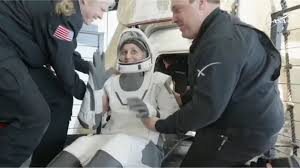After more than nine months in space, astronauts Butch Wilmore and Suni Williams have safely returned to Earth, splashing down in the Atlantic Ocean off the coast of Tallahassee, Florida.
Their journey home marks the end of a mission that was originally planned to last just a few weeks but was extended due to technical difficulties with their spacecraft.
Wilmore and Williams launched to the International Space Station (ISS) as part of a critical test flight aimed at evaluating a new spacecraft’s capabilities. Initially, their mission was intended to last about a week, but shortly after arrival, engineers discovered problems with the spacecraft’s thrusters, preventing a safe return. The astronauts were forced to remain on the ISS, where they continued working alongside the station’s crew while awaiting a solution.
During their prolonged stay, they conducted more than 150 scientific experiments, assisted with station maintenance, and adapted to life in orbit far longer than anticipated. Williams also set a historic record for the most spacewalking hours by a female astronaut.
After months of troubleshooting, mission control gave the all-clear for their return, and their capsule finally undocked from the ISS. They were joined on their journey home by two other astronauts—NASA’s Nick Hague and Russian cosmonaut Aleksandr Gorbunov—who had also completed their tour aboard the space station.
Also Read; Putin Agrees to Pause Strikes After
Trump Call
The spacecraft re-entered Earth’s atmosphere and successfully splashed down in the ocean just after 5:57 p.m. local time. As recovery crews moved in to retrieve the astronauts, an unusual sight greeted them—dolphins encircling the capsule in a rare and mesmerizing moment captured by drone footage.
Following their retrieval, Wilmore and Williams were assisted out of the spacecraft and will now undergo an extensive rehabilitation program to counteract the effects of prolonged weightlessness. Extended time in space can cause muscle atrophy, bone density loss, and balance issues, requiring weeks of recovery before astronauts fully readjust to Earth’s gravity.
Despite the unexpected challenges, the astronauts remained in good spirits and were welcomed back with enthusiasm by mission teams. Their experience will contribute valuable data for future long-duration missions and help refine spacecraft design to ensure safer journeys for astronauts in the years ahead.







